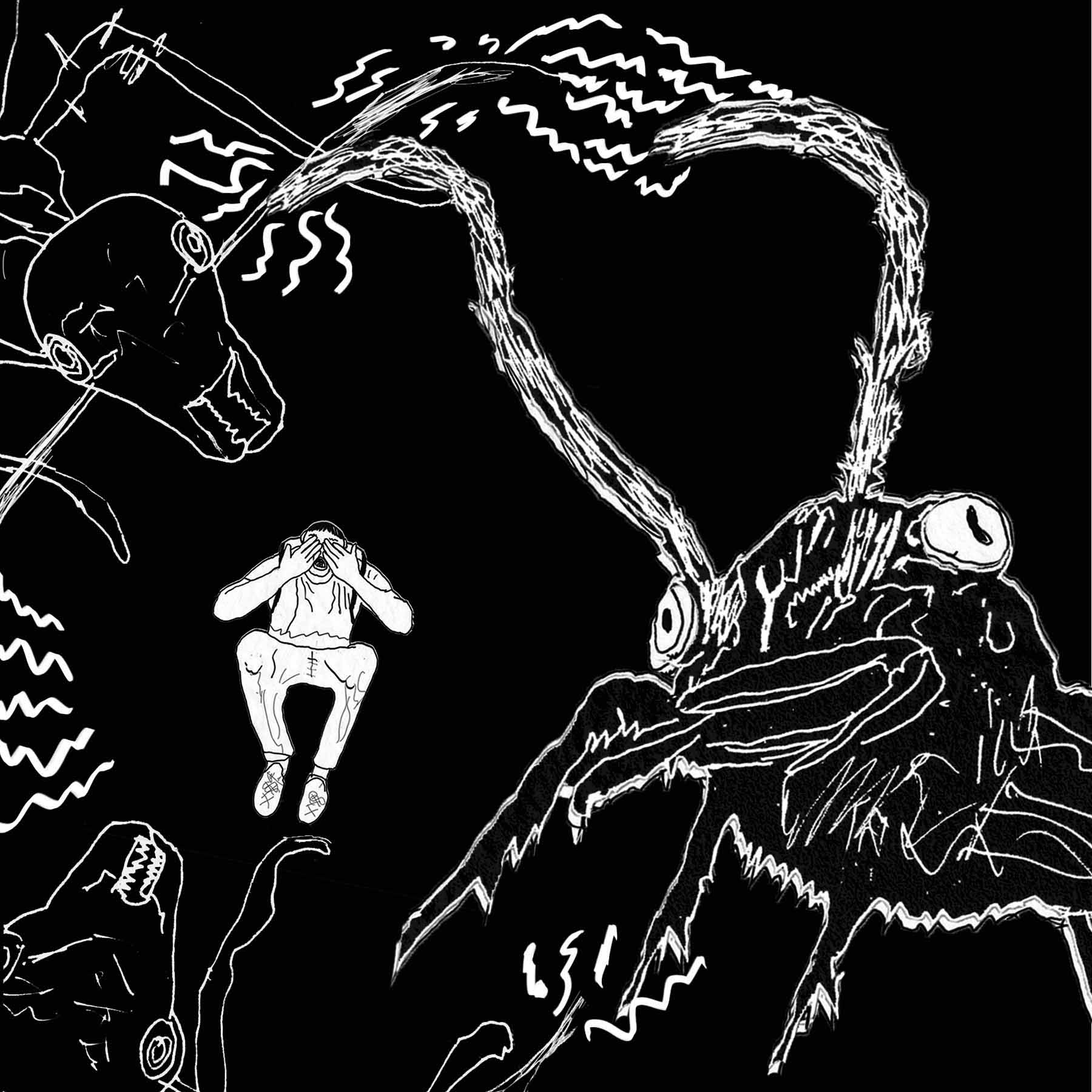
Thanks again for the invite to your “villains” comic anthology, and the rate you quoted for ten pages sounds more than fair to me. I assume the artist will be paid the same or more, right? They should get more given how much of the story the artist will have to convey. I’ll admit right up front that while I have read—and do read—comics, I’ve never written one and I don’t know what a comic script looks like beyond hearing it’s not totally dissimilar to screenwriting, not that I’ve written a bunch of screenplays either. How’s that for a pitch? Sold, right? If you go for my idea, I’ll certainly do my homework, and I’ll take you up on the offer to send me some sample scripts.
Anyway, the pitch for real:
There will be no dialogue or narrative commentary in this story. It will be told exclusively via the images/art. The art will be black and white, with an aesthetic of Charles Burns’s Black Hole (see, I told you I read comics) mashed up with 1950s atomic monster movies. A stark or minimalist style while also looking like it might’ve come from a Twilight Zone episode.
The opening panels: An empty stretch of desert with a silhouetted person approaching in the distance. With each panel the person comes closer into view until he’s finally in focus. He’s a haggard, unshaven, middle-aged white man wearing tattered clothes and sneakers, and carrying a backpack. He’s slumped and his eyes are down at his feet. We get the sense he’s been walking for a while.
We follow him for a few more panels that spotlight him from a wider view. Looming in the background are large monoliths with wide bases tapering toward their rectangular tops. The structures are not recognizably human-made. Think the film Phase IV and the ant-colony towers in the first act, or, at the discretion of the artist, Devils Tower as featured in Close Encounters of the Third Kind.
In a hoary nod to a trope from scores of old movies, the man carries a tattered photo of his wife and a whole brood of kids, four or five. The photo could be right out of the insufferable Family Circus comic strip.
He continues walking, each panel sinking us and him deeper into a seemingly endless desert. More monoliths dot the horizon.
Near an outcropping of boulders and caves, the man stumbles upon a community of survivors, a diverse group of about ten or more people who, unlike the disheveled man, appear to be thriving, with a variety of structures and gardens built.
The group is initially wary, but they welcome the man to their community. He spends that first day working hard as part of the group, helping to reinforce irrigation lines and tend a garden.
At dusk, with the day’s work done, the community gathers to eat and socialize. The group is suddenly attacked by a horde of car-sized ants—think the ants from THEM! (1954).
The community is prepared and fights back valiantly. They manage to kill some of the ants, but the numbers on this day are overwhelming. Some people are killed. Some people escape into the reinforced caves.
Throughout the fight the man does nothing. He sits with his hands covering his eyes, like a child trying to hide from the scary part of a movie.
The ants eventually gather around him, their antennae twitching. The art will show wavy lines emanating from the antennae to imply that they are telepathically communicating. While he might appear ashamed and devastated, the man obediently scrambles onto his knees, assuming a supplicant’s pose, and holds out his hands.
An ant spits up a bowling ball–sized glob of glucose.
The man deposits it in his backpack. The ants crowd and touch his head with their antennae, then they let him leave.
The man resumes his walk through the desert as night approaches. He eventually comes upon a lone house in the sand, one that wouldn’t be out of place in an affluent suburb. This House of Usher has yet to collapse, and it rests in the shadow of one of the giant anthill monoliths.
He goes inside. His family (the one from the picture he carries) greets him with smiles and hugs and kisses
He places half of the globule from his backpack onto a serving dish. The other half goes into a larder in the kitchen (there are many more half-globules there).
The family sits at a dining room table, they bow their heads in prayer, and then they eat.
What do you think? ![]()
Paul Tremblay has won the Bram Stoker, British Fantasy, and Massachusetts Book awards, and is the author of Survivor Song, Growing Things, The Cabin at the End of the World, Disappearance at Devil’s Rock, A Head Full of Ghosts, and the crime novels The Little Sleep and No Sleep till Wonderland. His essays and short fiction have appeared in the New York Times, the Los Angeles Times, and numerous year’s-best anthologies. He has a master’s degree in mathematics and lives outside Boston with his family.
Illustration: Nick Stout
